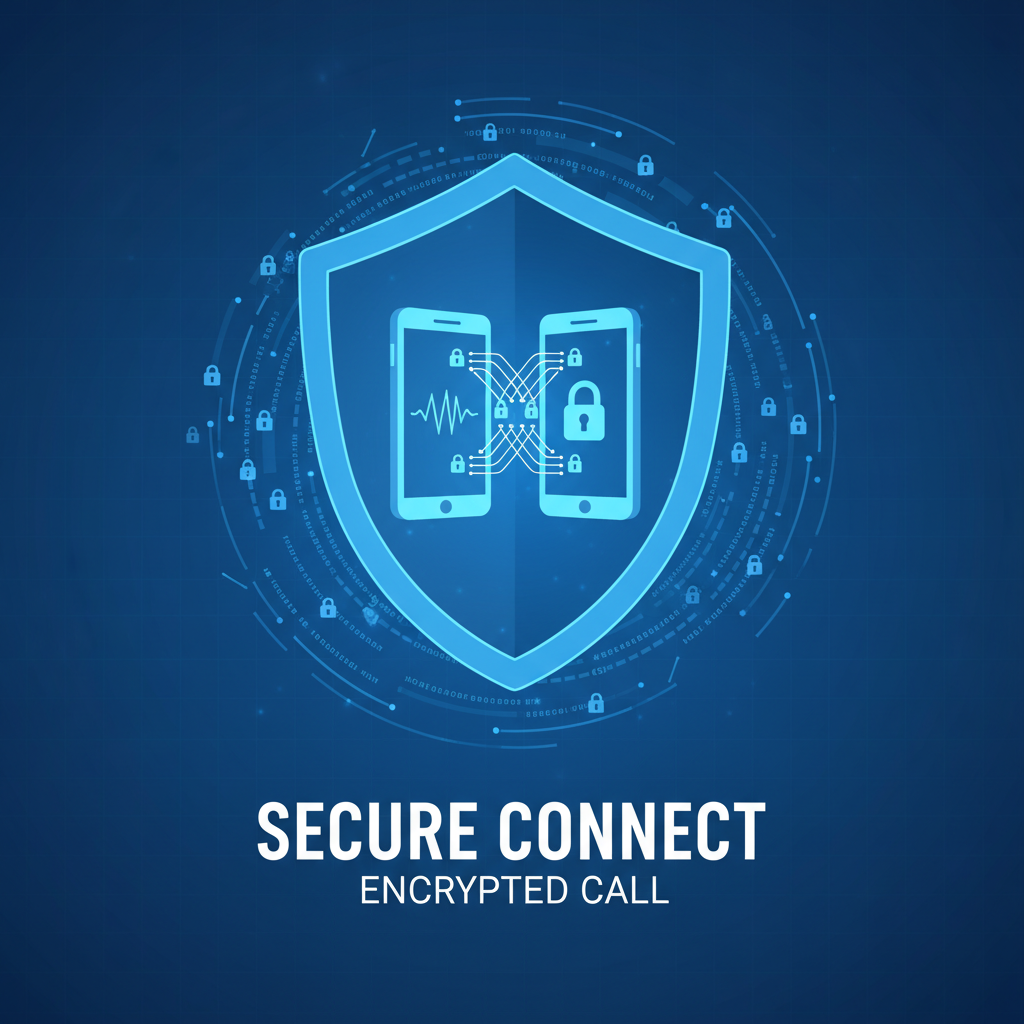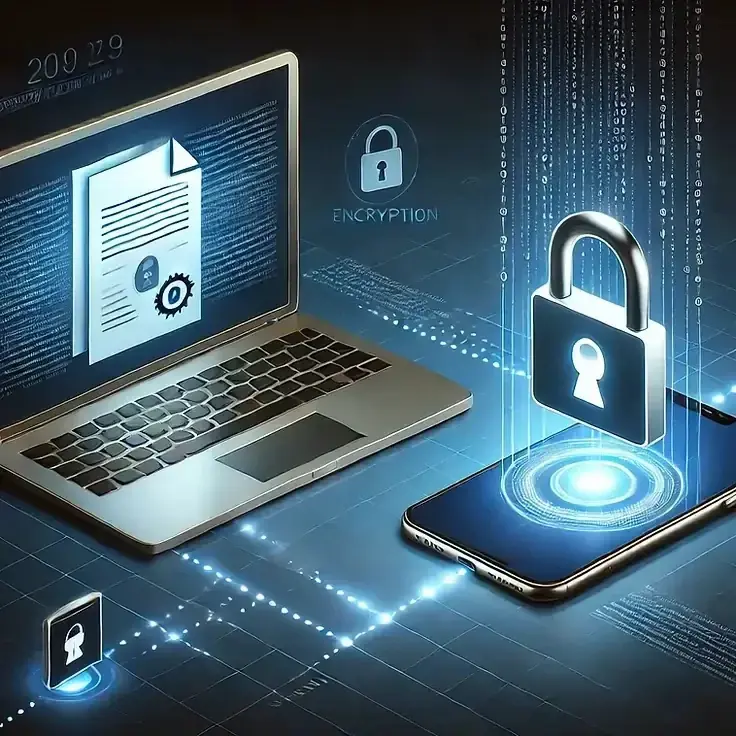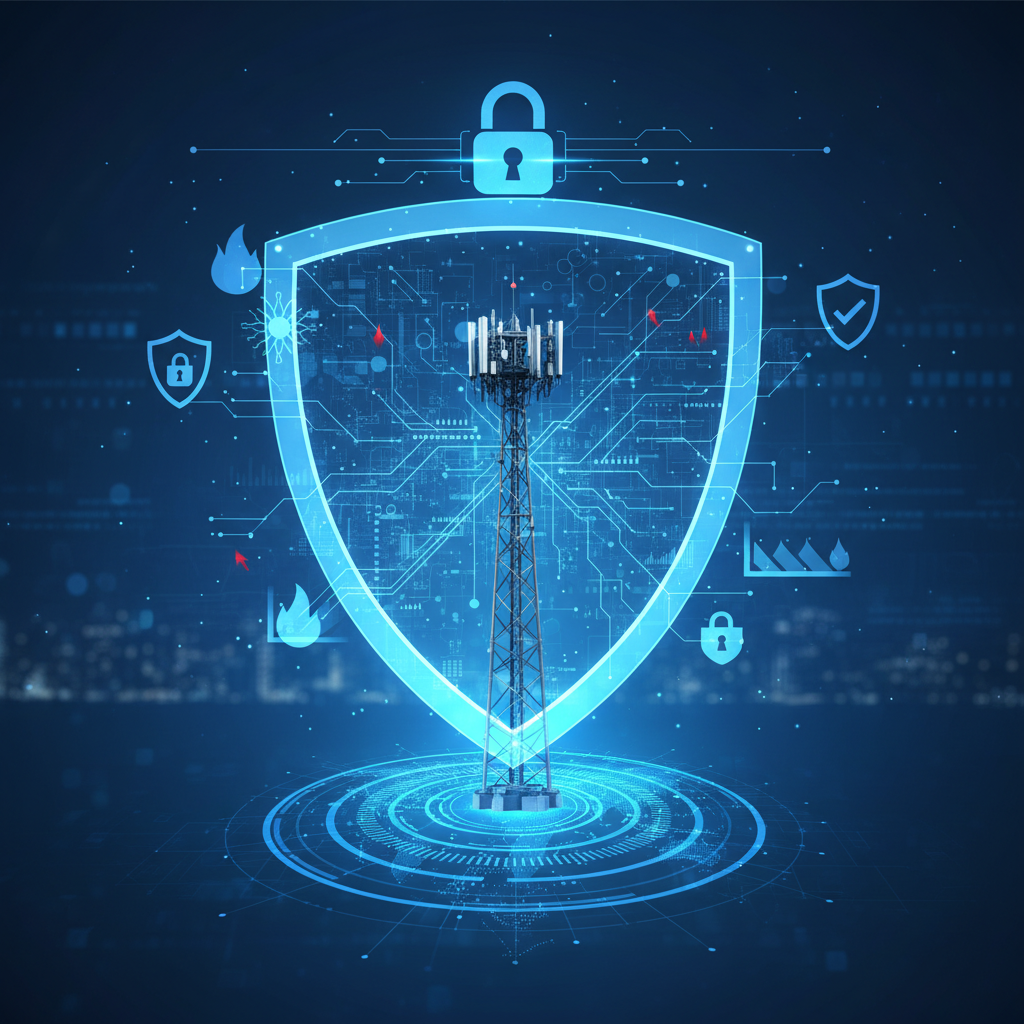The recent Salt Typhoon hack is a stark reminder that secure communication is no longer optional. For businesses and government agencies handling sensitive information, voice calls remain one of the most vulnerable yet critical communication channels. Despite the wealth of digital communication tools available, the phone call persists as the preferred method for discussing confidential matters, making unprotected calls a prime target for sophisticated attackers.
Why Voice Calls Need Protection
The Critical Role of Voice Communications
Voice calls remain essential for sensitive discussions because they:
- Enable real-time decision-making in critical situations
- Facilitate nuanced discussions difficult to convey in text
- Build trust and relationships between parties
- Allow rapid information exchange during crises
- Provide immediate clarification and feedback
- Support collaboration across teams and organizations
The Vulnerability Problem
Standard phone calls are remarkably insecure:
1. Network-Level Interception
- Calls traverse multiple carrier networks
- Each network point is a potential interception site
- Network administrators have access to calls
- Government lawful intercept systems exist at carrier level
- Breaches like Salt Typhoon expose entire infrastructures
2. Protocol Weaknesses
- SS7 protocol vulnerabilities allow call interception
- VoIP protocols often lack strong encryption
- Mobile networks may use weak or no encryption
- Downgrade attacks force use of less secure protocols
3. Device and Endpoint Risks
- Malware can record calls on compromised devices
- Physical access to phones enables monitoring
- Cloud-synced call logs expose communication patterns
- Call metadata reveals sensitive information
4. Third-Party Exposure
- Conference call services may record conversations
- Cloud PBX systems often store call data
- Third-party apps may have security vulnerabilities
- Service provider breaches expose call records
What Makes Voice Calls Particularly Vulnerable
Real-Time Nature
Unlike text or email, voice calls:
- Cannot be easily reviewed before transmission
- May reveal information through tone and emotion
- Often discuss sensitive topics in unguarded moments
- Happen spontaneously without time for security setup
- May include multiple participants with varying security
Even encrypted calls expose metadata:
- Who called whom
- When calls occurred
- Call duration
- Frequency of communication
- Location data
- Pattern analysis
This metadata alone can reveal:
- Organizational hierarchies
- Business relationships
- Confidential negotiations
- Crisis situations
- Personnel issues
Human Factor
Voice calls are vulnerable to human errors:
- Speaking on calls in public spaces
- Not verifying caller identity
- Social engineering attacks
- Vishing (voice phishing) attempts
- Inadvertent disclosure of sensitive information
The Inadequacy of Standard Security Measures
TLS/SRTP: Necessary but Insufficient
Many VoIP systems use TLS (Transport Layer Security) and SRTP (Secure Real-time Transport Protocol):
What They Provide:
- Encryption between endpoints and servers
- Protection against passive eavesdropping
- Authentication of endpoints
Critical Gaps:
- Calls are decrypted at service provider servers
- Provider can access call content
- Vulnerable to compromised infrastructure
- No protection if provider systems are breached
- Government access via lawful intercept
Salt Typhoon demonstrated: When attackers compromise carrier infrastructure, network-level encryption provides no protection.
PBX and Enterprise Phone Systems
Traditional enterprise phone systems have fundamental limitations:
On-Premises PBX:
- Calls leaving premises traverse insecure networks
- Integration with public telephony exposes communications
- Costly to maintain and update security
- Limited encryption for external calls
Cloud PBX:
- Calls processed by third-party provider
- Provider has access to call content
- Cloud infrastructure may be compromised
- Data sovereignty and compliance concerns
- Dependent on provider security measures
End-to-End Encryption: The Only True Solution
What is E2EE for Voice?
End-to-end encrypted voice calls are encrypted from the moment they leave your device until they’re decrypted on the recipient’s device. No intermediary—not the network carrier, not the service provider, not government agencies—can access the call content.
Key Principles:
- Encryption on Device: Calls are encrypted before leaving your phone
- No Intermediary Access: Service providers cannot decrypt calls
- Direct Key Exchange: Encryption keys shared only between callers
- Perfect Forward Secrecy: Each call uses unique session keys
- Authentication: Verify you’re talking to the intended person
How E2EE Voice Calls Work
Step 1: Key Exchange
- Devices negotiate encryption keys using public key cryptography
- Keys are never transmitted in a form accessible to others
- Perfect forward secrecy ensures past calls remain secure if keys are compromised
Step 2: Call Establishment
- Encrypted connection established between devices
- Service provider facilitates connection but cannot access content
- Metadata minimized to essential routing information
Step 3: Encrypted Communication
- Voice data encrypted in real-time on sender’s device
- Transmitted as encrypted packets
- Decrypted only on recipient’s device
Step 4: Authentication
- Cryptographic signatures verify caller identity
- Out-of-band verification options (security codes)
- Protection against man-in-the-middle attacks
Step 5: Secure Termination
- Session keys securely deleted after call
- No call recording unless explicitly enabled and encrypted
- No recoverable call content on intermediary systems
Advanced Security Features for Voice
1. Post-Quantum Cryptography
Current encryption will be vulnerable to future quantum computers:
The Threat:
- Quantum computers can break RSA and ECC
- “Harvest now, decrypt later” attacks
- Sensitive calls recorded today may be decrypted in future
The Solution:
- Post-quantum key exchange algorithms
- Quantum-resistant encryption
- Dual-layer PQ protection
- Future-proof security
Cellcrypt implements dual-layer post-quantum encryption to protect against both current and future threats.
2. Perfect Forward Secrecy
Each call uses unique encryption keys:
Benefits:
- Compromise of one call doesn’t expose others
- Past calls remain secure if current keys are stolen
- Limits damage from any single breach
- Essential for long-term security
3. Identity and Authentication
Verify you’re talking to the right person:
Methods:
- Cryptographic signatures
- Security verification codes
- Out-of-band authentication
- Integration with identity systems
- Trusted contact lists
Protection Against:
- Impersonation attacks
- Man-in-the-middle attacks
- Caller ID spoofing
- Social engineering
Limit information exposed about calls:
Cellcrypt Approach:
- Minimal routing metadata only
- No call content analysis
- No unnecessary logging
- Privacy-preserving architecture
- Data minimization by design
Enterprise Requirements for Secure Calls
Beyond Encryption: Enterprise Features
Organizations need more than just encryption:
1. Administrative Controls
- User provisioning and de-provisioning
- Group management
- Policy enforcement
- Access controls
- Centralized administration
2. Compliance and Governance
- Audit trails for accountability
- Compliance reporting
- Legal hold capabilities
- Data retention policies
- Regulatory alignment (HIPAA, GDPR, SOX, FedRAMP)
3. Integration
- Active Directory/LDAP
- Single sign-on (SSO)
- Mobile device management (MDM)
- Enterprise communications systems
- Workflow integration
4. Deployment Flexibility
- Cloud deployment for rapid setup
- On-premises for data sovereignty
- Hybrid for gradual migration
- Air-gapped for classified environments
5. Reliability and Support
- High availability architecture
- Redundancy and failover
- 24/7 support
- Service level agreements (SLA)
- Professional services
Use Cases for Secure Voice Calls
Government and Defense
Requirements:
- Classified communications
- Cross-agency coordination
- Field operations
- Diplomatic communications
- Intelligence operations
Cellcrypt Advantage:
- NATO approved
- Government certified
- Post-quantum encryption
- On-premises deployment
- Air-gapped capability
Enterprise
Requirements:
- Executive communications
- M&A discussions
- Board meetings
- Legal consultations
- Intellectual property discussions
Cellcrypt Advantage:
- Enterprise controls
- Compliance support
- Integration capabilities
- Flexible deployment
- Professional support
Healthcare
Requirements:
- HIPAA compliance
- Patient consultations
- Provider coordination
- Emergency communications
- Telemedicine
Cellcrypt Advantage:
- HIPAA-compliant architecture
- Audit trails
- Business Associate Agreement (BAA)
- Secure messaging integration
- Mobile access
Legal
Requirements:
- Attorney-client privilege
- Client consultations
- Case discussions
- Witness communications
- Sensitive negotiations
Cellcrypt Advantage:
- Legal-grade security
- Evidence preservation
- Chain of custody
- Compliance reporting
- Professional certification
Financial Services
Requirements:
- SOX compliance
- Trading communications
- Client consultations
- M&A discussions
- Regulatory compliance
Cellcrypt Advantage:
- Financial compliance support
- Audit trails
- Transaction integrity
- Regulatory reporting
- Risk mitigation
Critical Infrastructure
Requirements:
- SCADA system coordination
- Emergency response
- Incident management
- Multi-agency coordination
- 24/7 availability
Cellcrypt Advantage:
- High reliability
- Redundant architecture
- Emergency capabilities
- Interagency coordination
- Proven track record
Common Misconceptions About Secure Calls
Myth 1: “Standard VoIP is Secure Enough”
Reality: Standard VoIP encryption protects only in transit. Providers can access call content, and infrastructure breaches expose communications.
Myth 2: “Our Phone System is Behind a Firewall”
Reality: Calls eventually traverse public networks where they’re vulnerable. Internal security doesn’t protect external communications.
Myth 3: “We Use a Secure Conference Service”
Reality: Most conference services can access call content, record calls, and may be vulnerable to breaches.
Myth 4: “Mobile Calls Are Encrypted”
Reality: Mobile network encryption is weak, can be downgraded, and doesn’t protect against SS7 attacks or carrier-level interception.
Myth 5: “We’ll Know if Someone Is Listening”
Reality: Professional interception is undetectable. You won’t know calls are compromised until it’s too late.
Myth 6: “Encryption Makes Calls Complicated”
Reality: Modern E2EE voice calls are as easy to use as standard calls, with encryption happening transparently.
Cellcrypt Secure Calls: Military-Grade Protection
Comprehensive Security
End-to-End Encryption:
- Military-grade encryption (NATO approved)
- Post-quantum cryptography (dual-layer PQ)
- Perfect forward secrecy
- Zero-knowledge architecture
Identity and Authentication:
- Strong authentication methods
- Caller verification
- Device identity management
- Integration with enterprise identity systems
Metadata Protection:
- Minimal metadata collection
- Privacy-preserving architecture
- No call content analysis
- Data minimization
Enterprise Features
Administration:
- Centralized management console
- User and device provisioning
- Policy enforcement
- Group management
- Access controls
Compliance:
- HIPAA, GDPR, SOX, FedRAMP aligned
- Comprehensive audit trails
- Legal hold support
- Retention policies
- Compliance reporting
Integration:
- Active Directory/LDAP
- SSO support
- MDM integration
- Voice gateway for PBX integration
- API for custom integration
Deployment Options
Cloud:
- Rapid deployment
- Managed infrastructure
- Automatic updates
- Scalable architecture
On-Premises:
- Complete data control
- Custom security policies
- Air-gapped deployment
- Regulatory compliance
Hybrid:
- Best of both approaches
- Gradual migration
- Flexibility
- Risk mitigation
Mobile:
- iOS and Android
- Secure app stores
- MDM support
- Remote management
Desktop:
- Windows and macOS
- Linux support
- Integration with business apps
- Unified experience
Implementation Best Practices
1. Assessment and Planning
- Identify sensitive communications requiring protection
- Determine compliance requirements
- Map user groups and use cases
- Define success criteria
2. Policy Development
- Establish security policies for voice communications
- Define approved communication channels for different data types
- Create incident response procedures
- Develop user guidelines
3. Pilot Deployment
- Start with small user group
- Test functionality and usability
- Gather feedback
- Refine policies and training
4. Training and Awareness
- Train users on secure calling procedures
- Explain why security matters
- Provide clear usage guidelines
- Regular security awareness updates
5. Full Rollout
- Gradual expansion to all users
- Ongoing support and training
- Monitor adoption and usage
- Address issues promptly
6. Ongoing Management
- Regular security audits
- Policy updates as threats evolve
- User awareness reinforcement
- Continuous improvement
Conclusion
Voice calls remain one of the most critical—and vulnerable—communication channels for sensitive discussions. Standard phone systems, even with network-level encryption, cannot protect against sophisticated attacks like Salt Typhoon that compromise telecommunications infrastructure.
End-to-end encryption is the only reliable protection for voice calls, ensuring that only the communicating parties can access call content. But encryption alone isn’t enough—organizations need enterprise features, compliance support, and administrative controls that consumer solutions cannot provide.
Cellcrypt delivers military-grade secure voice calls with the enterprise features that organizations require:
- True end-to-end encryption with zero-knowledge architecture
- Post-quantum cryptography protecting against future threats
- Comprehensive administrative controls and policy enforcement
- Full compliance support for regulatory requirements
- Flexible deployment options (cloud, on-premises, hybrid)
- Proven track record in government, defense, and enterprise
Don’t let vulnerable voice calls expose your organization’s most sensitive communications. The Salt Typhoon attacks demonstrated that network-level security is insufficient. Implement true end-to-end encrypted voice calls now.
Protect your conversations with Cellcrypt’s military-grade secure calling platform.
Get Started with Cellcrypt | Learn About Secure Voice Calls



